The train to Gdansk was comfortable and fast, but by the time I reached the Main Railway Station in Gdansk, it was pouring with rain. I took a taxi and soon settled at a flat I had chosen on the internet. Photography is a true wonder! The flat appeared much more attractive on the photos than in its live version, but I didn’t allow this to disturb me too much. I had more problems with the fact that the internet was practically on the verge of usable and I had great difficulties and barely managed to send a note to the owner, complaining about the wi-fi, so by the late hours of the evening he sorted it out.
Meanwhile I went for a walk around the centre of the town and what was really good about the tiny flat I was staying at was that it was quite close to the old centre of Gdansk. I roamed the main streets in the rain for a while, stopping at the Tourist Info Office, and then sat at a restaurant where I had a nice meal and used the significantly better internet connection than the one I had left at the flat. When the rain stopped for a while, I got out to walk a little bit more, as well as to go to the Main Station where I bought a ticket for the day after as I wanted to go and visit the Malbork Castle which is situated in a small place of the same name.
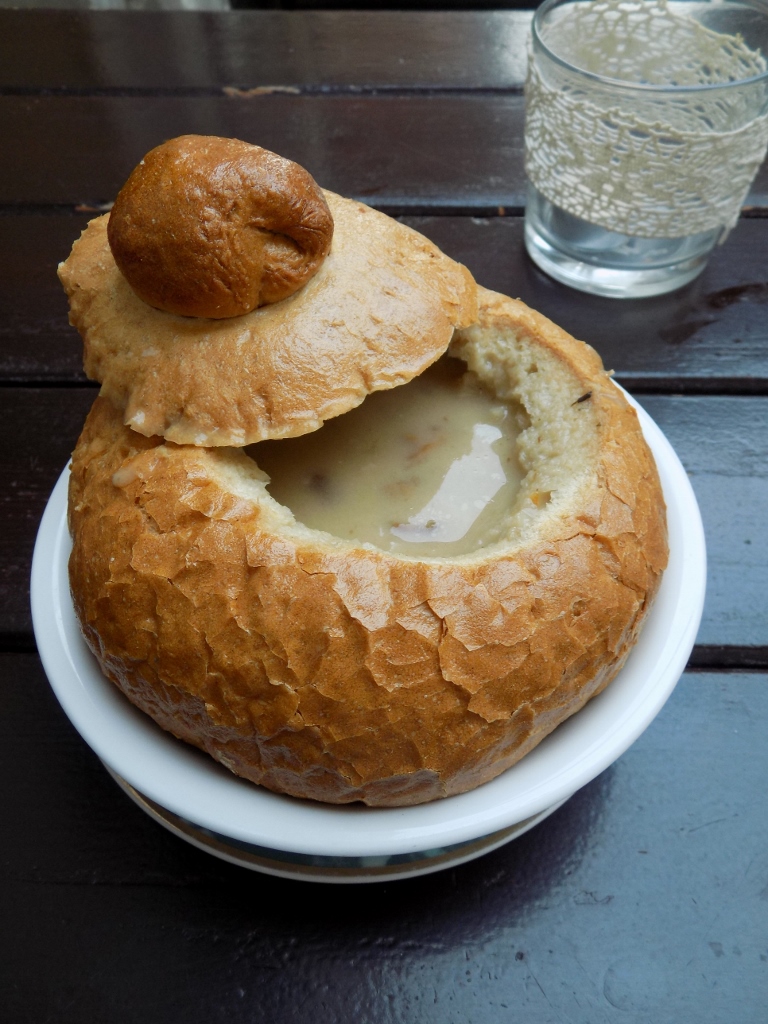 Polish speciality – a soup served in a bread bun
Polish speciality – a soup served in a bread bun
On my way back from the train station, I went along some side streets, but in the right direction, and there I came across a stunning sight, but as it was still drizzling I had no desire to get my camera out and fight the umbrella and the bad weather. Still, I gave myself the task to remember where this place was in order to pass there again.
Then I got out to the bank of the Motlawa river and it was really gorgeous there. By the way, Motlawa is a small tributary of the Vistula which soon enters the Baltic Sea. There were picturesque buildings on the riverbanks, restaurants, cafés, as well as nice sights all around. I walked upstream for a while, crossed onto one of the islands and to the other riverbank, and then it started to rain more heavily again. On the other hand, it was already getting late and I had been up since quite early that morning, so I headed for the flat.
The next morning, in addition to the significantly better internet connection in comparison to the day before, I was also greeted by the sun and it was almost incredible. After all, the forecast had predicted cloudy weather.
I headed for the train station, stopping along the way in order to take photos, with a desire to have at least a couple of them with some blue sky. And the photos were truly beautiful. The only problem was that I was not to stay there for too long lest I should be late for the train.
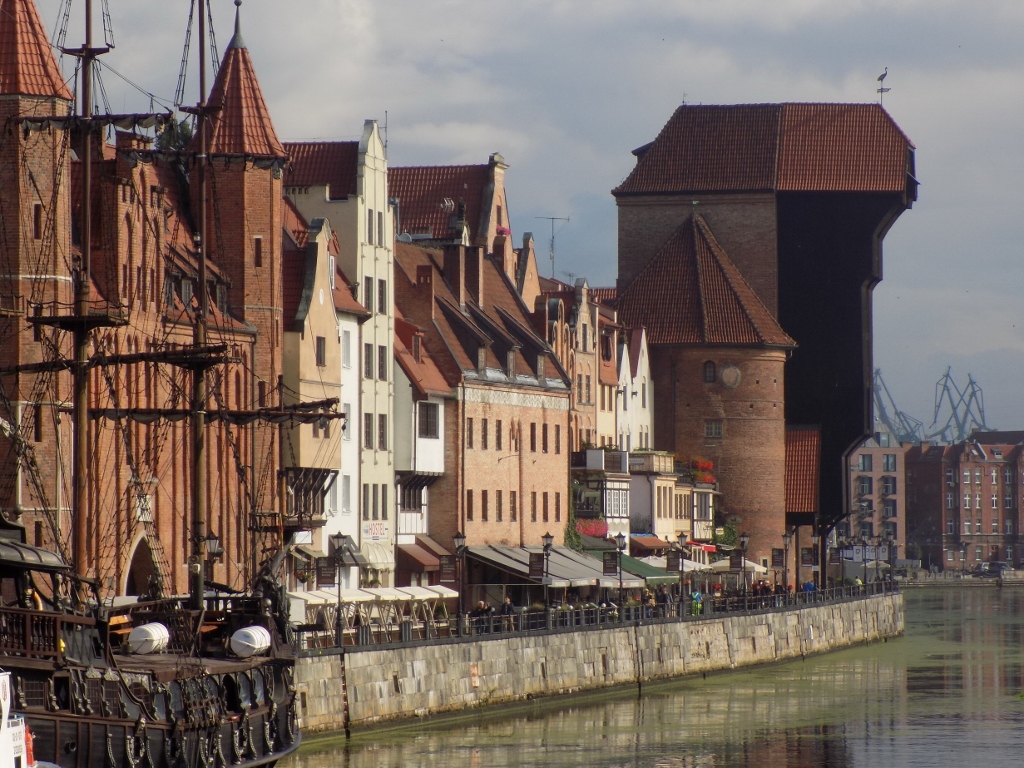 Gdansk Crane
Gdansk Crane
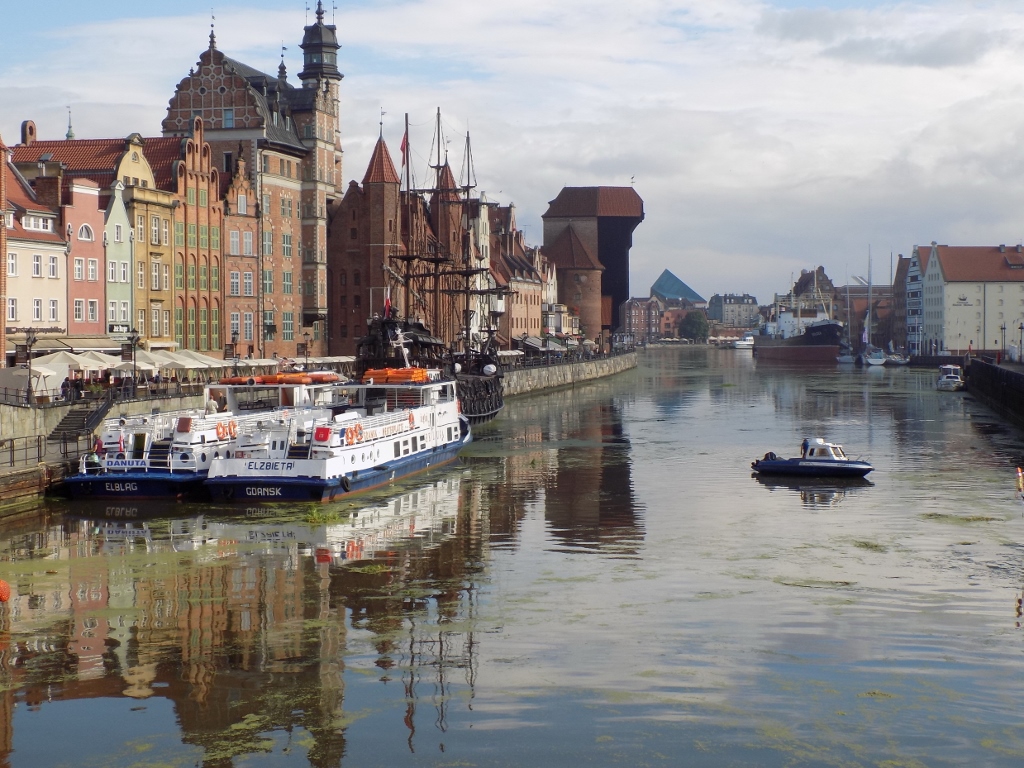 Gdansk, on the banks of the Motlawa
Gdansk, on the banks of the Motlawa
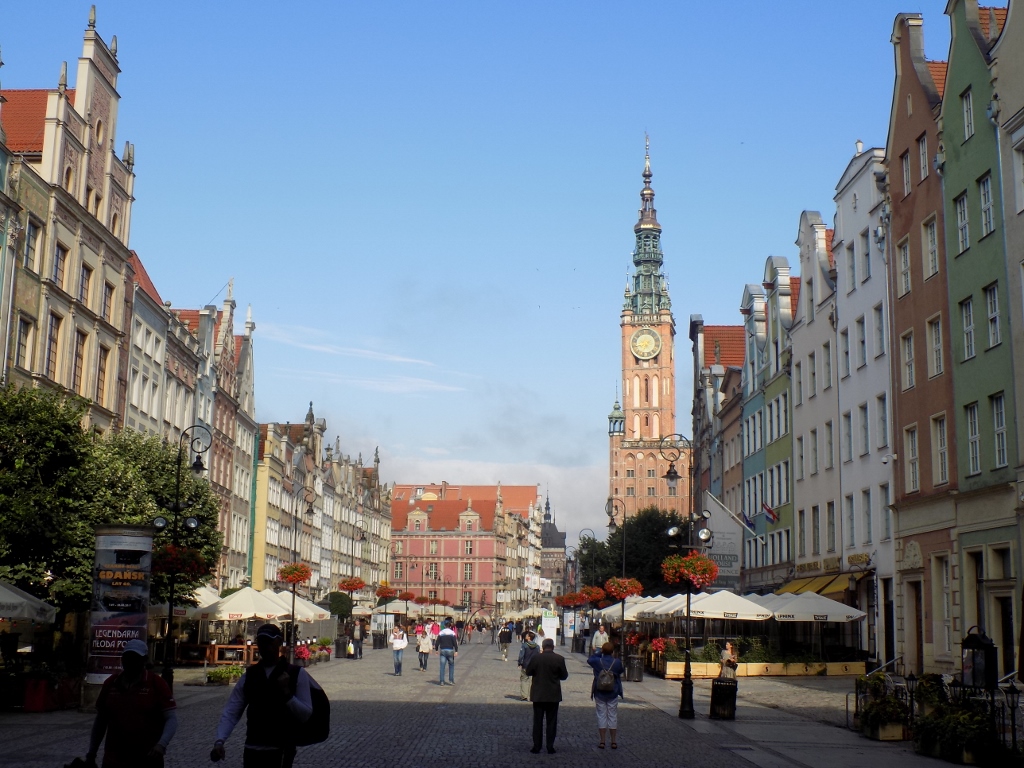 Gdansk, Long Market street (Długi Targ) with the tower of the Main Town Hall
Gdansk, Long Market street (Długi Targ) with the tower of the Main Town Hall
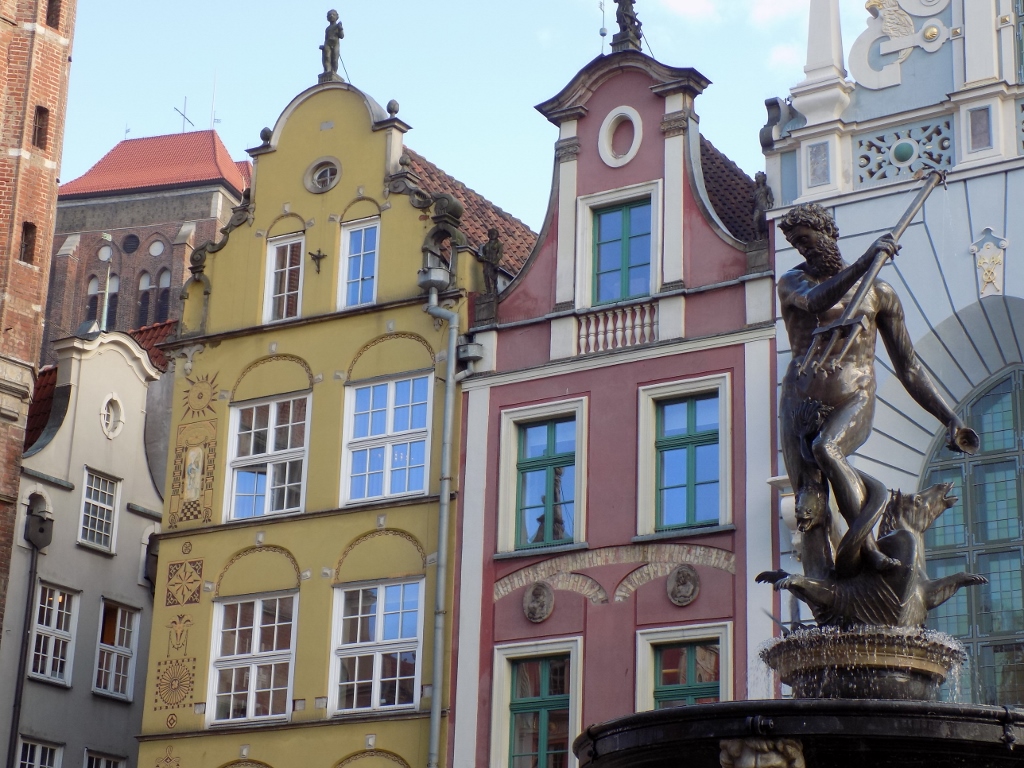 Gdansk, Long Market street and the Fountain of Neptune
Gdansk, Long Market street and the Fountain of Neptune
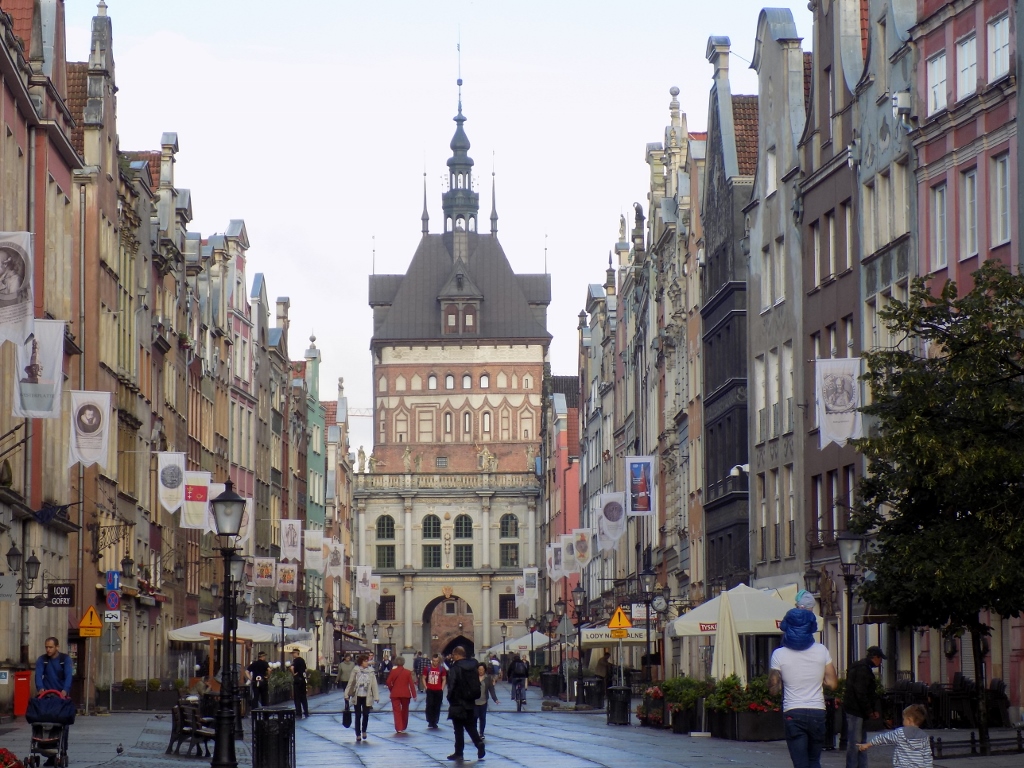 Gdansk, Long Market street, the Golden Gate building and the Prison Tower
Gdansk, Long Market street, the Golden Gate building and the Prison Tower
When I got to the station, and it was quite a place being so beautiful as it is, I had slight problems finding the right platform, but it all eventually worked out, except I almost had a heat stroke, since I had to rush a lot. The problem was not so much the high temperature, but the exceptionally high air humidity which I’m not quite accustomed to.
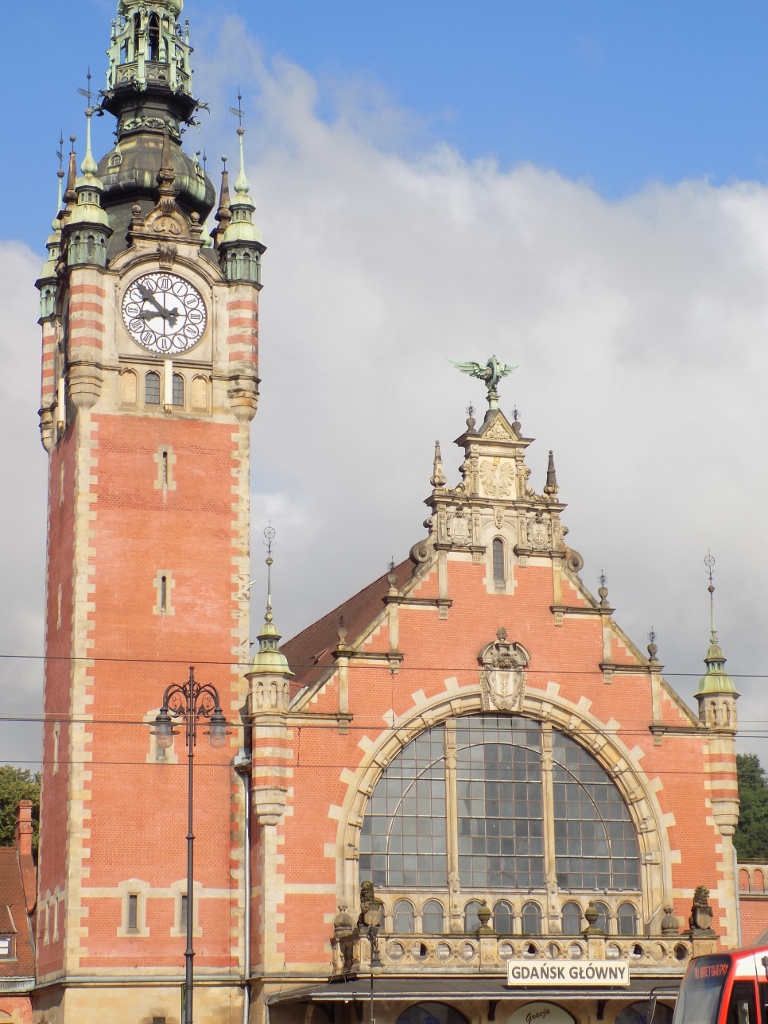 Gdansk, the Main Railway Station
Gdansk, the Main Railway Station
Once I’d reached the train station in Malbork, it took me some 20 minutes to get to the Castle. I found it interesting that along this way I didn’t notice any posters or signs that would suggest the direction in which the castle was located, taking into account that this is by far the main attraction of the place.
Namely, this is the biggest castle in the world made of bricks and the biggest brick building in Europe. Its construction was started in the 13th century by Teutonic Knights. Not only did they start it, but this was where their seat was, as well as the capital of their state that existed for around two centuries (although Malbork, i.e., Marienburg used to be the capital for around 150 years). The State of the Teutonic Order used to cover the territories of northern Poland, Lithuania, Latvia, Estonia and the present-day Kaliningrad (formerly Königsberg) which belongs to Russia. The Teutonic Order was established in connection with the Crusades and the original name of the order, the Teutonic Order of the Hospital of St. Mary, suggests what its function used to be. These were knights who used to run a hospital, they came from the territory of the present-day Germany and their patroness was the Holy Virgin. Of course, they went to the Holy Land and fought there, but when this ended, there appeared a problem as to where to settle them. They eventually came here, since they were invited by a Polish noble with an idea and plea that in return for the land and the space they, i.e., the knights, tried to convert some local pagans. The knights were led by the Grand Master and during the existence of this state, there were 16 of them in total. A new one would be elected after the death of the previous one and he would remain as the head of the order and the state until his own death.
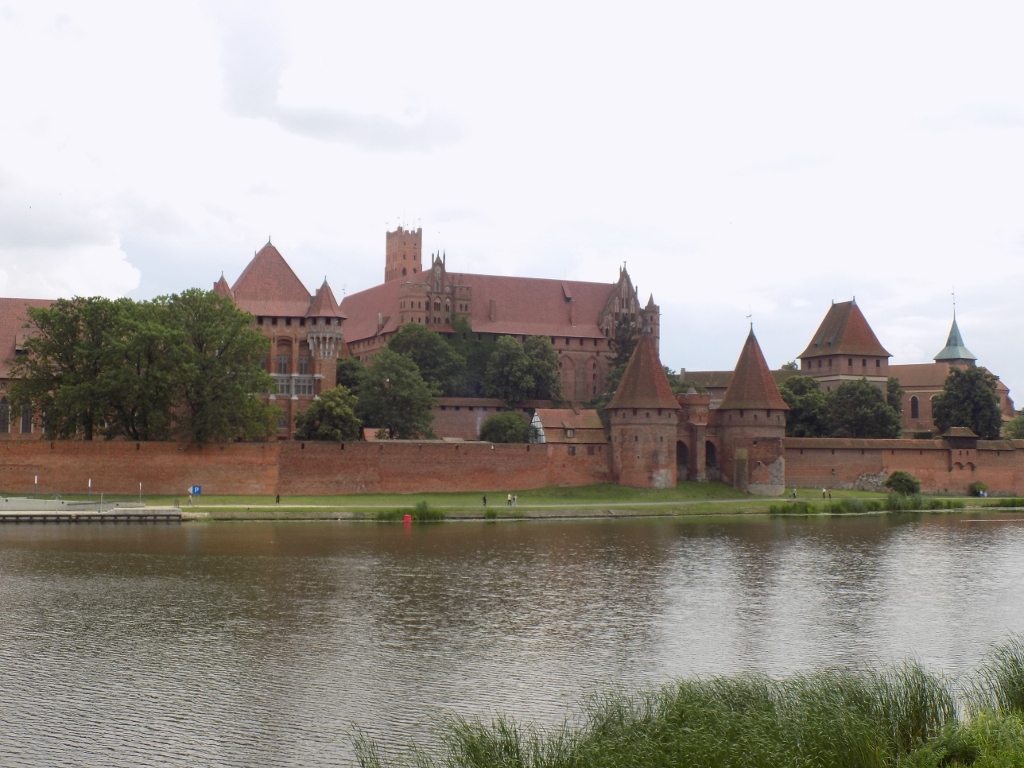 Malbork Castle on the bank of the river Nogat
Malbork Castle on the bank of the river Nogat
Very important for the history of Malbork, originally called Marienburg, was the Battle of Grunwald in which Teutonic knights fought with Poles and Lithuanians. Although the knights lost, the castle remained unconquered, but the order started with its own demise, getting over time into a position where they had no funds to pay the mercenaries they needed and finally selling the castle.
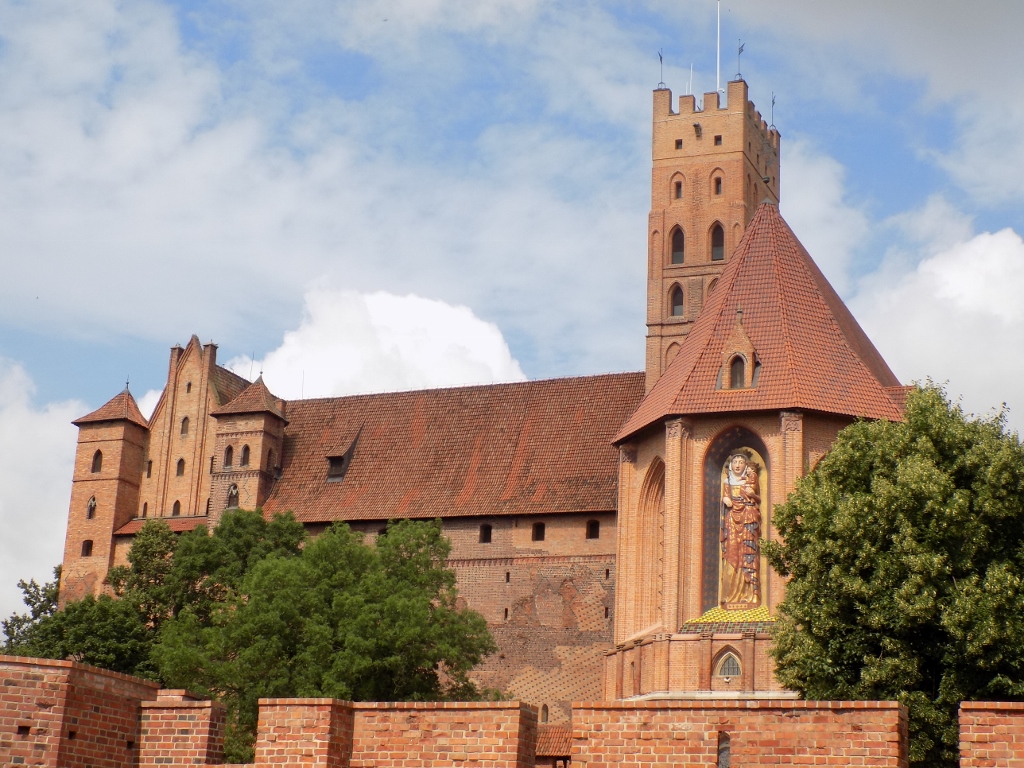 Malbork Castle, with St. Mary’s Church on the right; the image of the Madonna and Christ is 8 metres high
Malbork Castle, with St. Mary’s Church on the right; the image of the Madonna and Christ is 8 metres high
After 300 years under Poles, in the 18th century the castle went into the hands of Prussia and then to Germany. Thus it came that in 1945 Germans and the Red Army battled for it. The Germans were in the castle and it took the Soviets a few weeks to finally conquer the castle which by then was all but destroyed. Both the place and the castle went to Poland after WWII. The reconstruction and restoration were completed as late as in 2016. The last to be restored was the St. Mary’s Church extending from the Upper Castle which is also the oldest section of the complex.
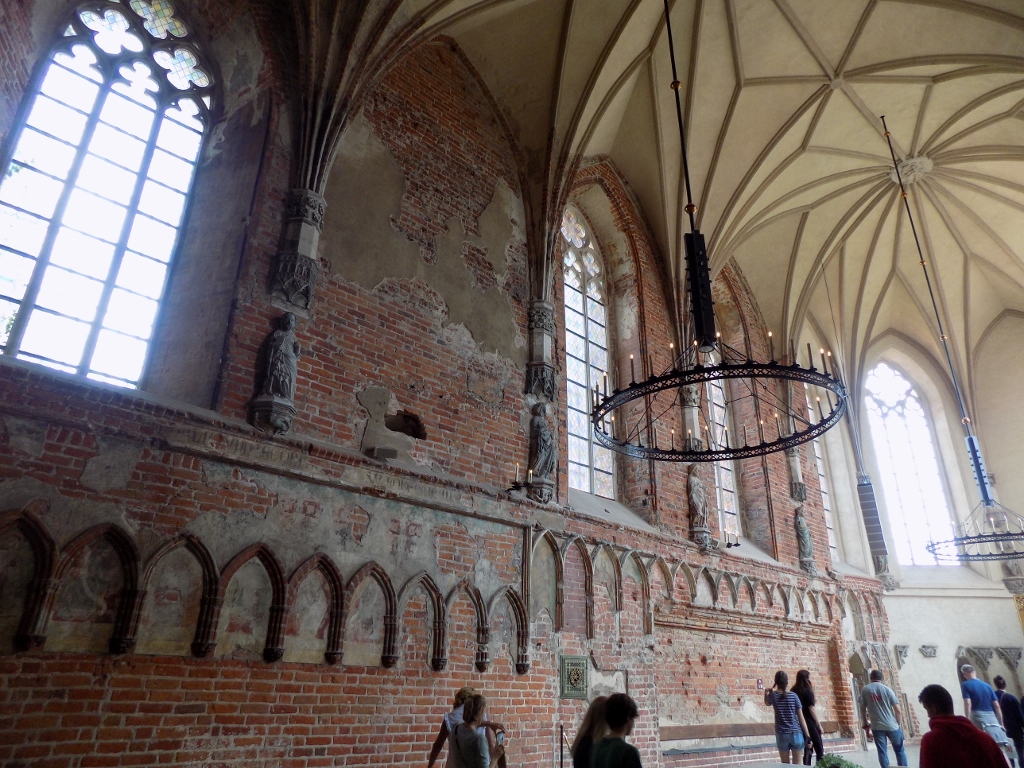 Malbork Castle, St. Mary’s Church where it is still possible to see consequences of the damages
Malbork Castle, St. Mary’s Church where it is still possible to see consequences of the damages
The castle is truly huge and although not all the parts have been opened to visitors yet, it takes a few hours to walk around it. There are several structures, inner yards, passages between walls, dry moats and many details, but it is also very nice to see the castle from the outside. Around the castle, there used to be a pond and several levels of protection, making it more difficult to conquer, and throughout the history it proved that those who envisaged it were quite successful in their designs. In addition to the moats, the drawbridges and the portcullis, there were also suitable places where any unwanted visitors could have hot water, hot oil or hot tar poured over them.
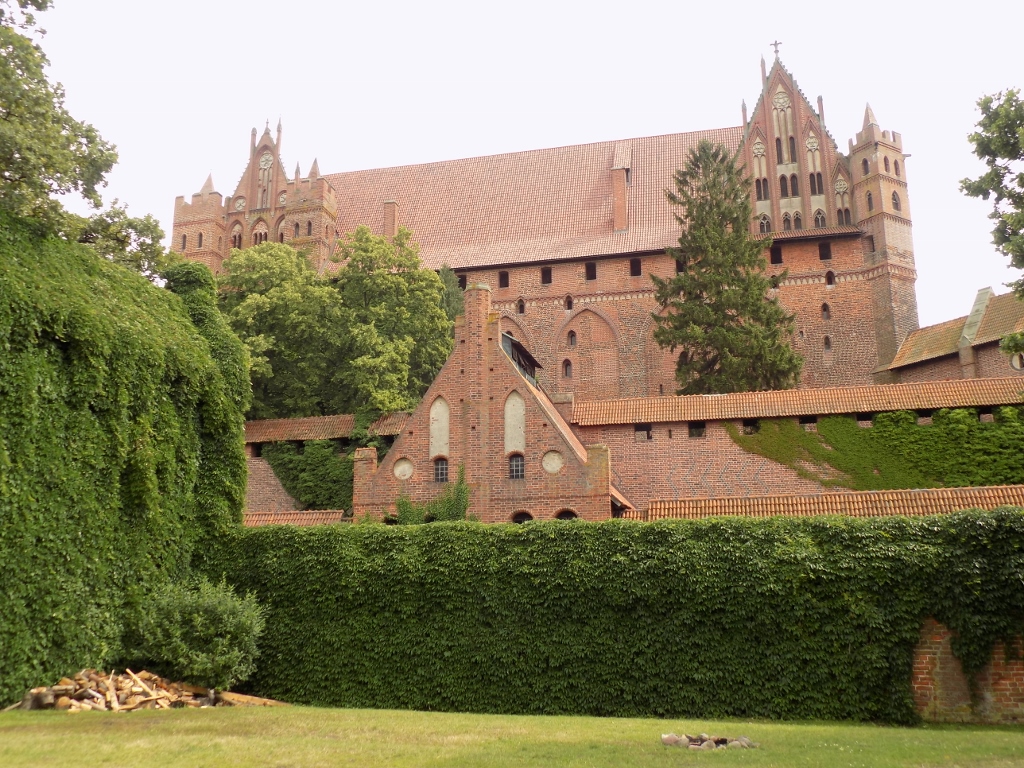 Malbork Castle, the Upper Castle
Malbork Castle, the Upper Castle
Around a large inner yard that precedes the Upper Castle, there are buildings that are called the Middle Castle. They contain premises for the placement of guests, as well as kitchens, a well and reception halls. There is also the Grand Master’s Palace with his private quarters, including even his private toilet. And there are, of course, formal refectories in which the Grand Master ate together with his guests, but it is interesting that there is a summer and a winter refectory. What is the difference? The summer one has a higher ceiling and a high number of large windows, while the winter one, in addition to the lower ceiling and fewer windows, also has openings for floor heating. Namely, fires were fed on the lower floors, the hot air was taken through a pipe system to the floor of the heated room and there it entered the given room through several gaps in the floor.
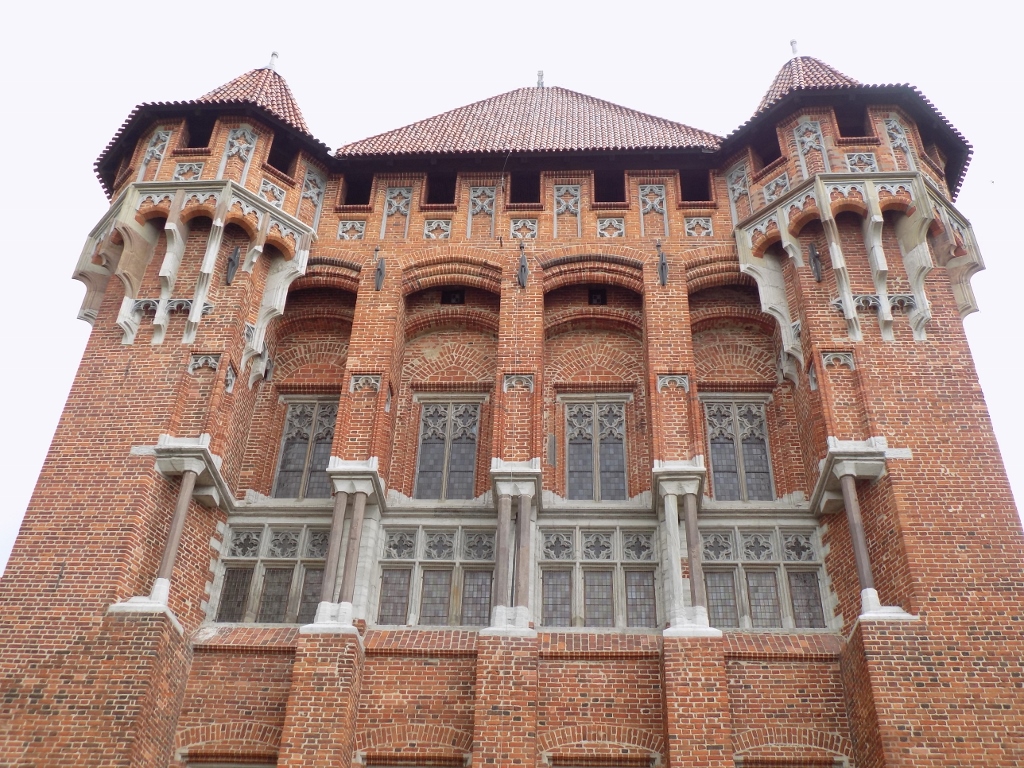 Malbork Castle, Grand Master’s Palace (the large windows belong to the summer refectory)
Malbork Castle, Grand Master’s Palace (the large windows belong to the summer refectory)
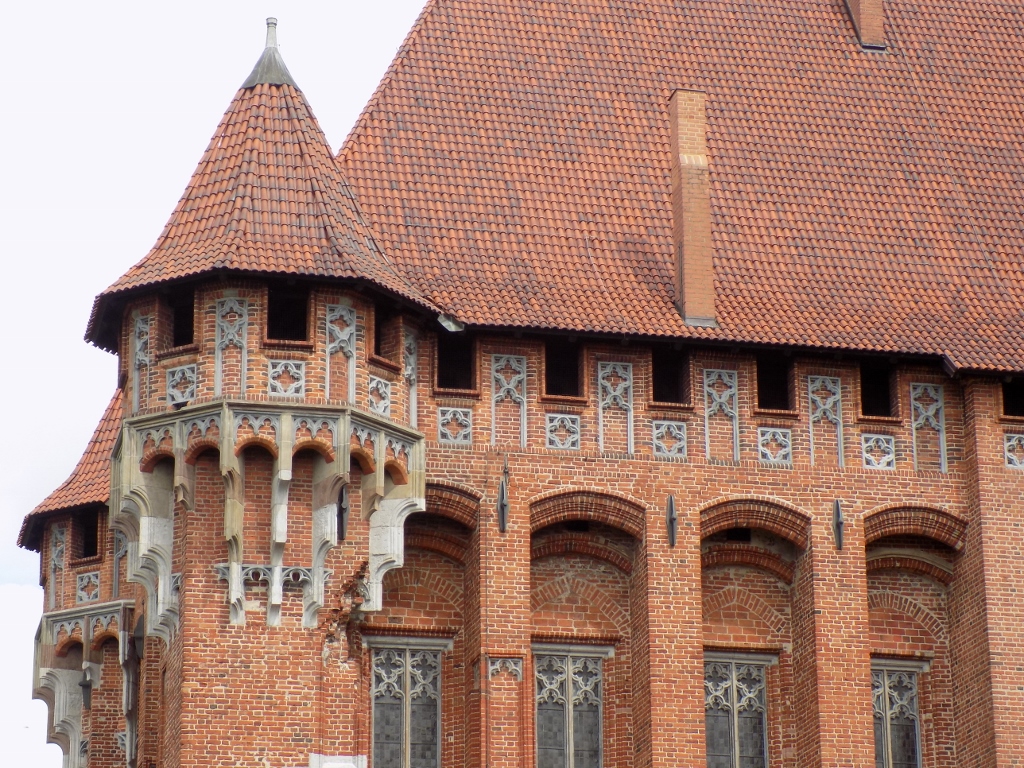 Malbork Castle, Grand Master’s Palace, a detail
Malbork Castle, Grand Master’s Palace, a detail
From the Middle Castle, one first enters a broad passage that runs around the Upper Castle, almost like a walking area, and following this passage one can reach St. Anne’s Chapel which is located under the choir of St. Mary’s Church. Thirteen (of the 16) Grand Masters were buried at this chapel, but today only three graves may be seen (stone grave slabs). Going around the Upper Castle, you also get to the Grand Master’s Rose Garden.
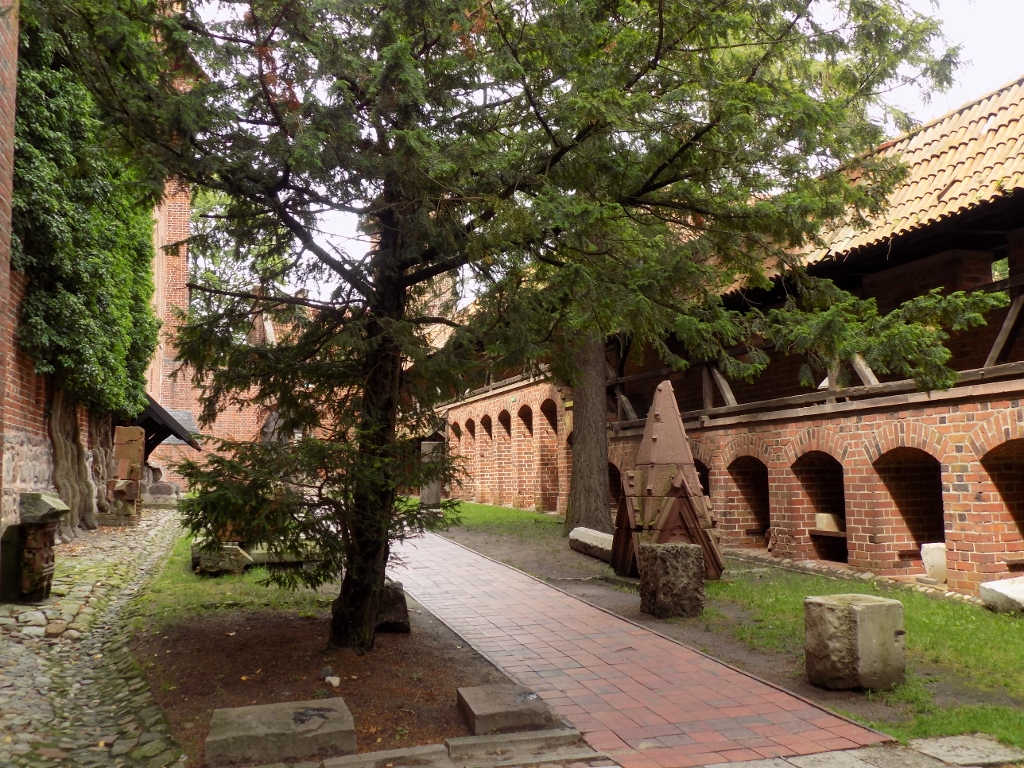 Malbork Castle, the “passage” leading around the Upper Castle
Malbork Castle, the “passage” leading around the Upper Castle
The Upper Castle served for the spiritual life of the order members. Its foundations are made of granite and they are up to 3.5 metres thick, with bricks laid down upon them. When I said that not all the sections were open to visitors, I was primarily thinking of the fact that it was possible to visit only the lower floors of the Upper Castle. It is probably necessary to take more time and to envisage and prepare the upper floors well. On the other hand, the inner yard and the cloisters running around it, as well as the rooms that can be visited, have some very pretty and interesting parts.
For instance, on top of the well which is in the centre of the Upper Castle’s inner yard, there is a statue of a pelican who, according to the legend, feeds its young with its own blood, thus symbolically representing Christ who sacrificed himself for the mankind.
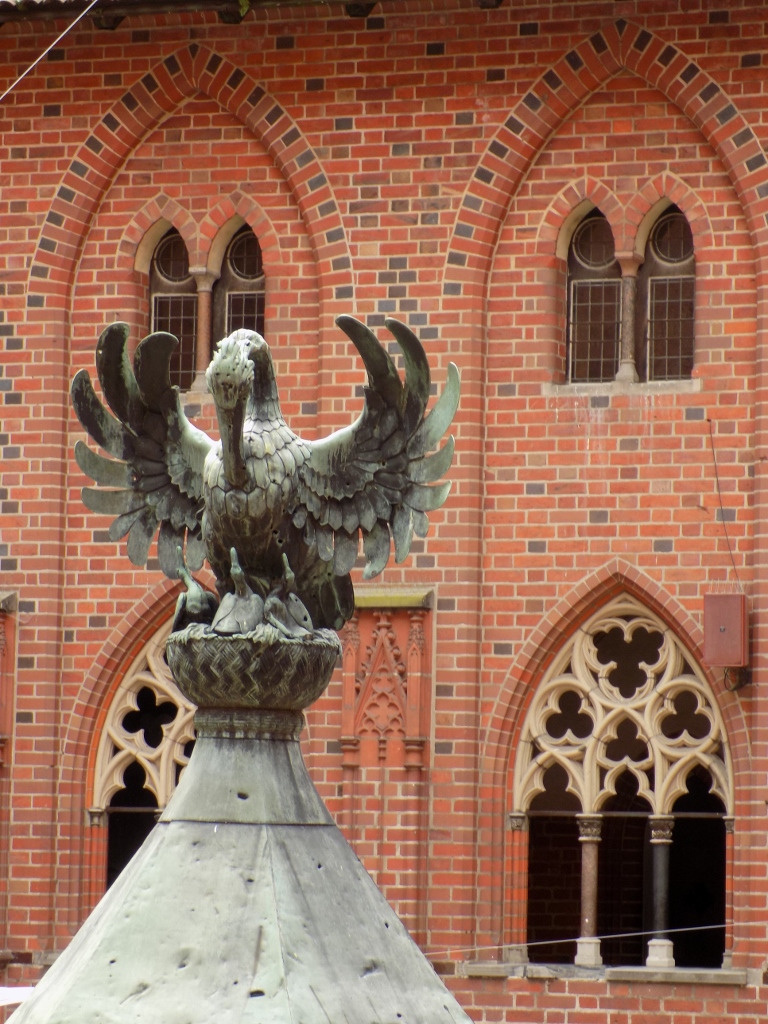 Malbork Castle, a pelican is feeding its young
Malbork Castle, a pelican is feeding its young
Around the inner yard there is a cloister and from there one may enter different rooms, including the dormitories of the order members, a refectory, a hall for the rest, etc., and from here one can reach St. Mary’s Church which was completely destroyed in 1945.
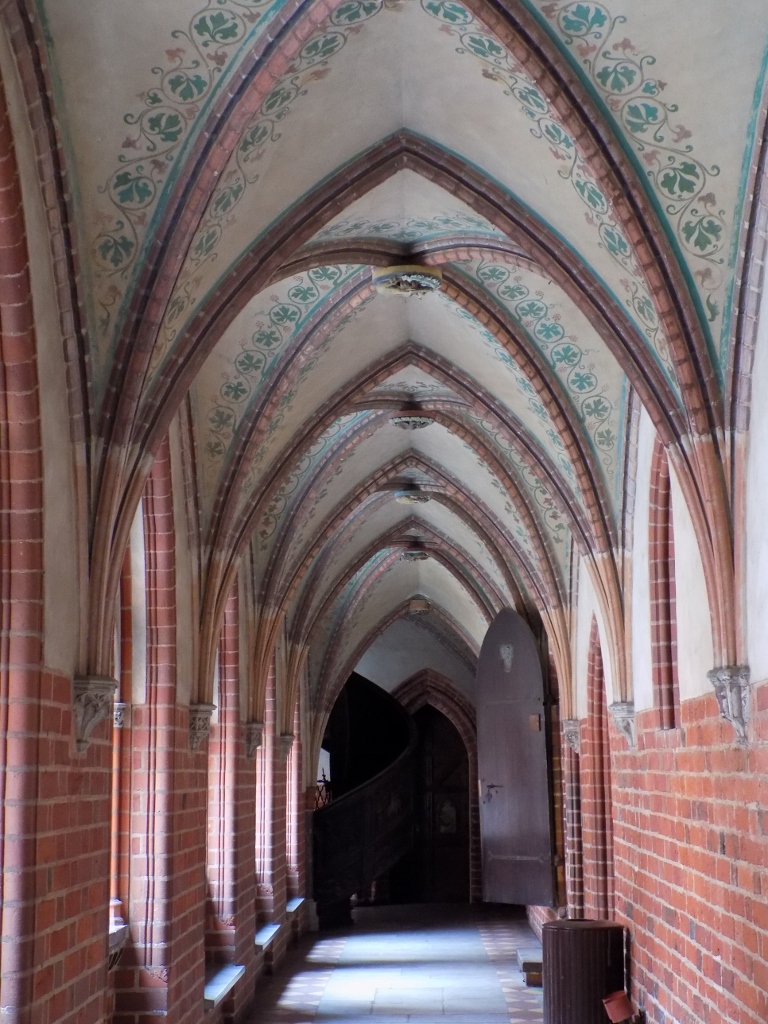 Malbork Castle, the Upper Castle’s cloister
Malbork Castle, the Upper Castle’s cloister
It was here that I finished with my visit to the Malbork Castle and I was exceptionally pleased with it. But, even as I was leaving the castle, I kept looking around because there were continuously some nice angles to be admired and enjoyed.
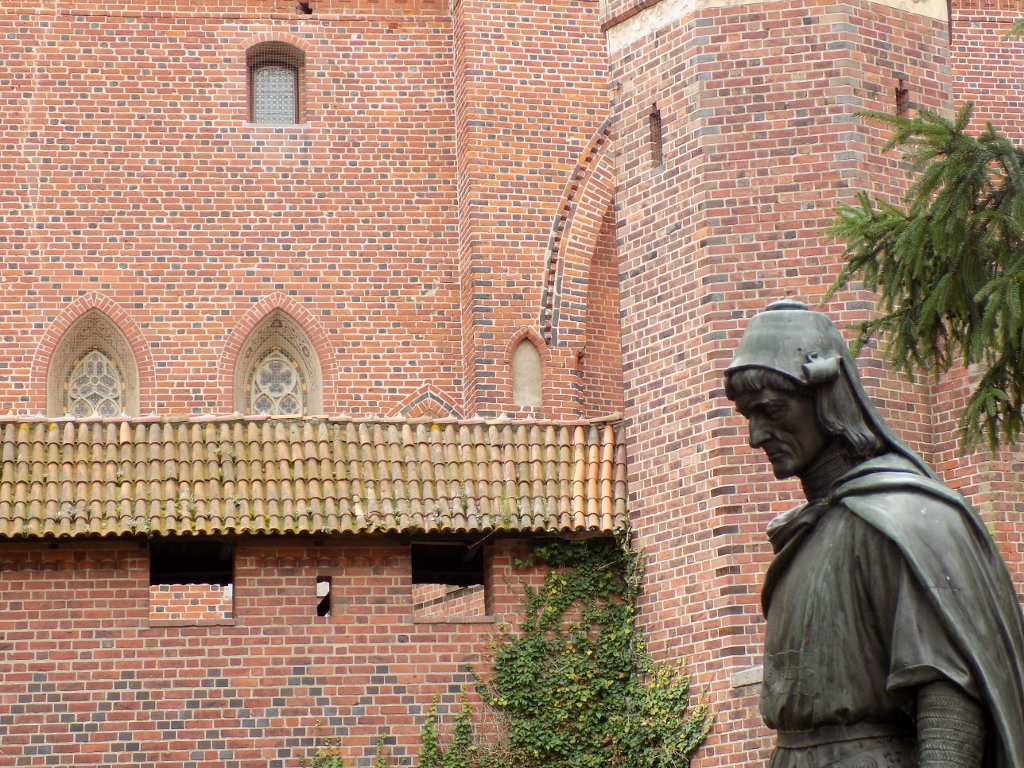 Malbork Castle, a detail
Malbork Castle, a detail
Then I went back to the railway station and from there moved on to the town of Elblag.
Namely, it had occurred to me to visit Elblag when I had thought that during my return from Kaliningrad I would have to change the direction of my journey in this place in order to continue to Olsztyn. This all changed when I bought direct coach tickets from Kaliningrad to Olsztyn, but the idea of visiting Elblag remained. On the other hand, although the thorough visit of the castle required a minimum of 3 to 4 hours, I still had some free time, so why then not go to Elblag. It was a kind of a challenge. Namely, the guy who worked at the Info Centre in Gdansk was from Elblag and he told me that they had started with the renovations of the town’s centre, but he was nonetheless surprised when I said I would like to go there.
So, I went there. I walked from the train station to the old centre and it was quite a lot, plus it was through a rather uninteresting area. Other than a very nice line of trees, there was nothing else that caught my eye. But, when I got to the Old Town, it could be seen that the facades of some interesting buildings were freshly painted and there were a few nice sights. Regardless of that modest architectural offer, Elblag is actually a very interesting place to visit since it is possible to sail along the Elblag Canal there. This is in fact an 80 km long canal which links lakes and waterways in this part of Poland. Today, it is mostly used for tourist purposes, but in addition to using locks, the vessels are occasionally transported over dry land using a special system, which makes this entire structure very interesting. Still, this requires at least one whole day, which I didn’t have, so I just read about it.
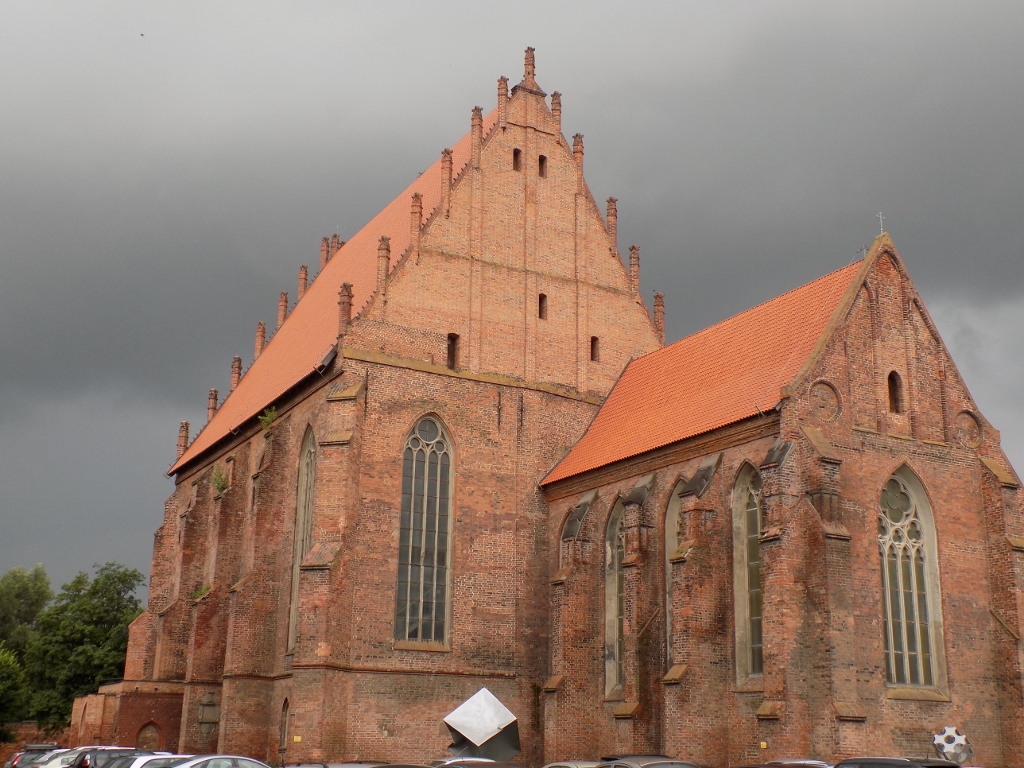 Elblag, one of the old churches, nowadays an art gallery
Elblag, one of the old churches, nowadays an art gallery
On the other hand, in the centre of the town I also saw some buildings that are in need of quite a lot of work, but other than these thoughts of mine it was important that it was starting to rain. As I was finishing with my “tour,” the rain was becoming more intense, and I decided to sit in a café, order something and ask them to call me a taxi. And I did all of this, but half way through my coffee, while the taxi was already there, the rain became so heavy that I felt it pointless to continue sitting outside, even under a thick canopy. So, I left my coffee and rushed into the taxi.
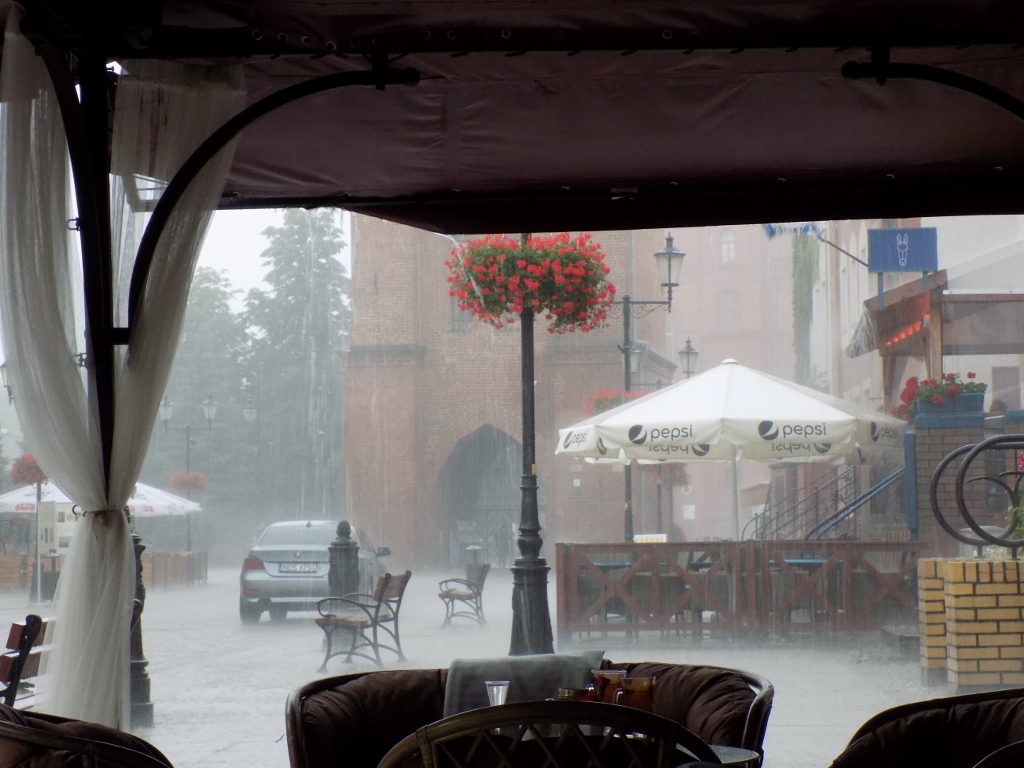 Elblag, the flood as I try to be relaxed while sipping my coffee
Elblag, the flood as I try to be relaxed while sipping my coffee
The taxi driver was a very nice man and he just kept repeating: “Catastrophe! Catastrophe!” The way I understood him, this kind of weather was not quite normal and usual. I had read that it may get rainy during summer, but this rain flooded entire sections of streets and the taxi driver occasionally had to drive with no visual input, with a hope that no hole had been made in the street in the meantime, since it was impossible to see the asphalt. Still, he brought me safely to the station and I could return to Gdansk. There I was met by dry weather and on my way from the station through the city centre I could still enjoy in some nice sights which are abundant in Gdansk.
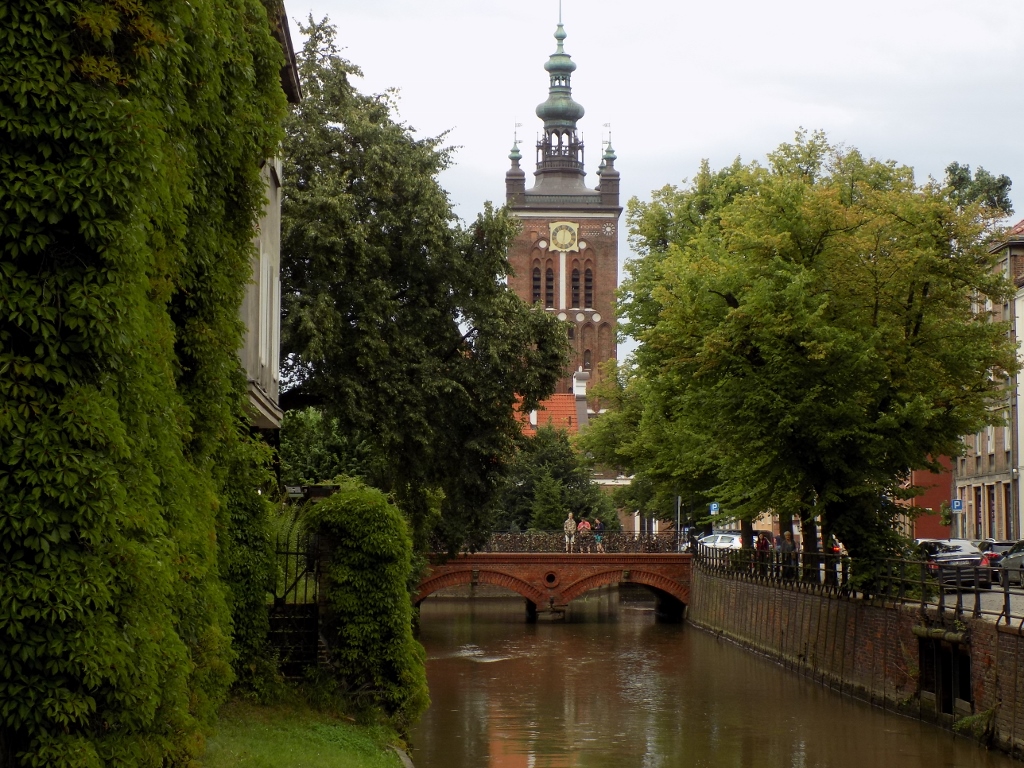 Gdansk, St. Catherine’s church
Gdansk, St. Catherine’s church